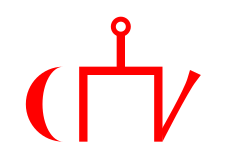Kazankhanatet
| Kazankhanatet | ||||
| ||||
Flagga | ||||
| Huvudstad | Kazan | |||
| Religion | Islam | |||
| Bildades | 1300-talet | |||
| – bildades ur | Gyllene horden | |||
| Upphörde | 1552 | |||
| – upphörde genom | erövring | |||
| – uppgick i | Tsarryssland | |||
Kazankhanatet var den tatarstat som på 1300-talet uppstod ur Gyllene horden, och som mellan 1438 och 1552 omfattade samma område som det Volgabulgariska riket.[1]
Kazankhanatet uppstod någon gång under 1300-talet eller 1400-talet. Khanatet var muslimskt och huvudstad var Kazan i nuvarande Tatarstan i Ryssland. Khanatet förde krig bland annat mot den nyligen frigjorda ryska Moskvastaten under loppet av 1400-talet. Moskvariket blev Kazankhanatets undergång, och under 1500-talet erövrades det av Ivan den förskräcklige. Regeringsperioden räknas från det att Ulug Mehmed utropade sig till khan 1438 till Kazans fall 1552.
- Kazantatariska soldater
Källor
- ^ Viacheslav Shpakovsky, David Nicolle, Gerry Embleton, Armies of the Volga Bulgars & Khanate of Kazan, 9th–16th centuries, Osprey Men-at-Arms 491 (2013).
Media som används på denna webbplats
Författare/Upphovsman: AlexTref871, Licens: CC BY-SA 4.0
Coat of arms of the Russian kingdom of 1667
Kazan Khanate military. Source of "European gravure" is not certain, but likely to be a work by Adam Olearius.
Författare/Upphovsman: Vorziblix, Licens: CC0
The flag of the Golden Horde, as shown in Angelino Dulcert's 1339 map. A similar flag appears in the later Catalan Atlas (1375), providing corroboration.
See also Early Mongol Flags at crwflags.com:
- One of the charges is a crescent and the other looks like a simplified form of the tamga from the flag of Idel Ural. On different copies of the flag, the crescent has different size; it is often smaller than shown here, sometimes even reduced into a simple oblique stroke and conjoined with the other charge into a si[n]gle symmetrical object; the other charge also sometimes lacks the oblique part [2, 3]. It was obviously difficult to draw the charges always the same way. The cities with this flag which are easy to identify are [2, 7, 8]: Sarai, the capital (spelled Sarra) - there is also a depiction of the ruler, "Jani Beg Lord of Sarai" ("Jambech senyor de Sarra"); Tana, present-day Azov, Russia; and Urgench, Uzbekistan (spelled Organci, with a cedilla under the c; nowadays ruined). This flag is a variant of the flag of "Emperor of Sarai" ("Emperador de Sara") from "Libro del conoscimiento de los reinos" [7] and might be the one that had really existed, considering the similarity of its charges with those from the flag of Idel Ural.
- [2] Enciclopedia universal ilustrada, vol. XXI, Espan~a Madrid: Espasa-Calpe S.A., 1968
- [3] Istorija otkric'a i istraz<ivanja, vol. I: Poc<etak istraz<ivanja; Mladinska knjiga, Ljubljana, 1979; Original title: A History of Discovery and Exploration, vol. I: The Search Begins;(C) 1973 Aldus Books Limited, London
- [7] Libro del Conoscimiento. Viajes medievales, vol. I Madrid: Fundacio'n Jose' Antonio de Castro, 2005 ISBN 84-96452-11-5 (complete edition) ISBN 84-96452-12-3 (vol. I) [e9s50]
- [8] A[p]pendices. (Ibid.)
- Tomislav Todorovic, 21 April 2007





